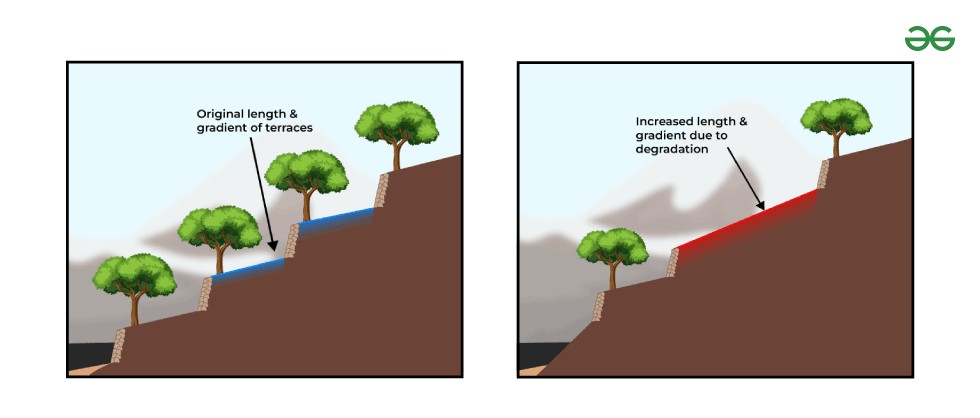The world’s population is growing, and with it, the demand for food is rising at an unprecedented rate. To meet these demands, agriculture has been pushed to its limits, often resulting in unsustainable practices that harm the environment. One of the significant challenges faced by modern agriculture is soil erosion. Erosion poses a grave threat to the sustainability of our food production systems and the health of our planet. However, there is hope on the horizon in the form of automation.
The Erosion Problem
Before we delve into the role of automation in erosion control, let’s understand why erosion is such a pressing concern. Erosion is the process by which soil is displaced from its original location due to natural forces such as wind, water, and even human activities like farming. This may seem like a natural process, but when accelerated by human actions, it can have devastating consequences.
Erosion strips away the fertile topsoil, which is essential for crop growth, and washes it into rivers and streams. As a result, not only does the soil lose its productivity, but it also contaminates water bodies with sediment, pesticides, and fertilizers. This can lead to water pollution, diminished aquatic habitats, and a host of other ecological problems.
Moreover, eroded soil can end up in areas where it shouldn’t, such as roads, urban areas, and even coastal regions, causing infrastructure damage and exacerbating the effects of climate change. In essence, soil erosion is a double-edged sword that harms both the environment and our ability to produce food sustainably.
The Role of Automation
Automation is revolutionizing various industries, and agriculture is no exception. In fact, the integration of automation technologies is proving to be a game-changer in the battle against erosion. Here’s how:
- Precision Farming
Precision farming, also known as smart farming, involves the use of automated systems and technologies to optimize various aspects of agriculture. Automated tractors, drones, and satellite imaging enable farmers to monitor their fields with unparalleled accuracy. This helps in identifying erosion-prone areas and taking preventive measures.
For instance, automated drones equipped with cameras and sensors can fly over fields, capturing data on soil health and moisture levels. This information allows farmers to make informed decisions about irrigation, crop rotation, and the use of cover crops, all of which can reduce erosion.
- Conservation Tillage
Traditional farming practices often involve intensive tilling of the soil, which can increase its vulnerability to erosion. However, automation has introduced conservation tillage methods that minimize soil disturbance. No-till and reduced-till farming techniques involve the use of automated equipment to plant crops without plowing the soil extensively.
These practices leave crop residues on the field’s surface, acting as a natural barrier against erosion. Additionally, the undisturbed soil structure is better at retaining water, reducing runoff and erosion caused by heavy rainfall.
- Soil Monitoring
Automation also plays a crucial role in continuous soil monitoring. Soil erosion doesn’t always happen visibly on the surface; it can occur beneath the topsoil layer. Automated sensors placed at various depths in the soil can detect changes in moisture content, compaction, and nutrient levels.
When erosion is detected early through these sensors, farmers can take immediate action to mitigate its effects. For example, automated irrigation systems can be adjusted to prevent overwatering, which can lead to soil erosion. Furthermore, automated nutrient injection systems can provide precise amounts of fertilizers, minimizing the risk of nutrient runoff.
- Weather Prediction
Erosion is often triggered by extreme weather events, such as heavy rainfall or windstorms. Automation has greatly improved our ability to predict these weather events with greater accuracy. Advanced weather monitoring stations and predictive algorithms can provide farmers with timely warnings of potential erosive conditions.
When farmers receive such warnings, they can take proactive measures like reinforcing soil with cover crops, securing loose soil, or adjusting irrigation schedules to prevent excessive runoff. These automated systems help reduce the element of surprise and enable farmers to plan accordingly.
The Future of Erosion Control
Automation’s role in erosion control is already making a significant impact, but the future holds even greater promise. As technology continues to advance, we can expect further innovations that enhance erosion control in agriculture. Some potential developments include:
- Robotics
The use of robots in agriculture is on the rise. These autonomous machines can perform a wide range of tasks, from planting and harvesting crops to maintaining soil health. In the context of erosion control, robotic systems could patrol fields, identifying erosion-prone areas and implementing erosion prevention measures autonomously. - Artificial Intelligence
Artificial intelligence (AI) is becoming increasingly sophisticated in analyzing vast amounts of data. In agriculture, AI can help farmers make data-driven decisions in real time. AI-powered systems can analyze soil conditions, weather forecasts, and historical erosion data to recommend optimal erosion control strategies. - Erosion-Resistant Crop Varieties
Automation can also play a role in developing erosion-resistant crop varieties. Automated genetic sequencing and breeding programs can expedite the creation of crops with robust root systems and erosion-resistant traits.
Conclusion
Automation is ushering in a new era of sustainable agriculture by aiding in erosion control. Through precision farming, conservation tillage, soil monitoring, and weather prediction, automation technologies are helping farmers protect their soil, reduce runoff, and safeguard the environment.
As we look to the future, the marriage of automation and agriculture promises even more innovative solutions for erosion control. By harnessing the power of robotics, artificial intelligence, and genetic engineering, we can further strengthen our efforts to ensure food security while preserving the planet for generations to come.
The battle against erosion is ongoing, but with automation on our side, we have the tools to tilt the odds in favor of a more sustainable and resilient agricultural future.




